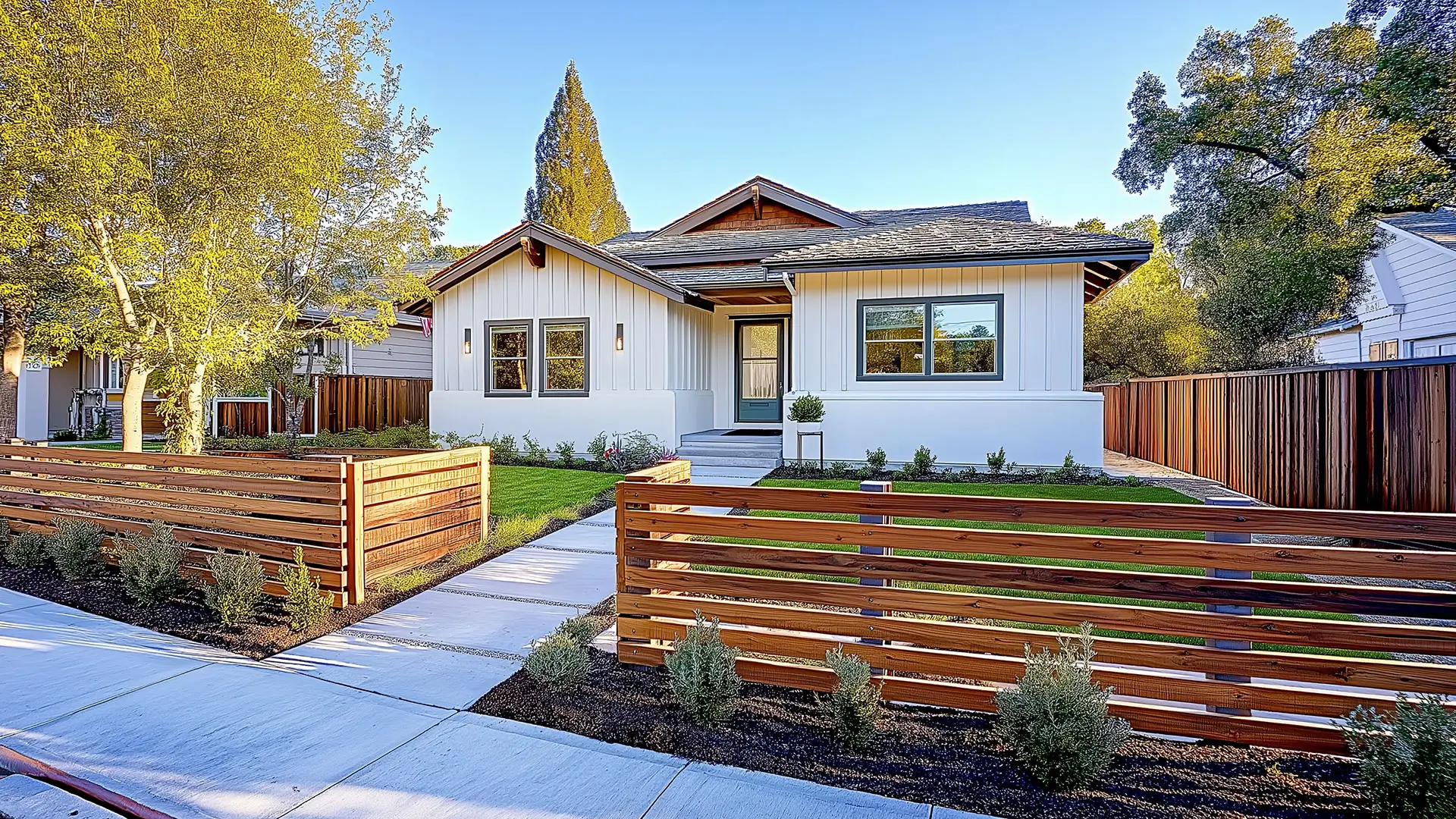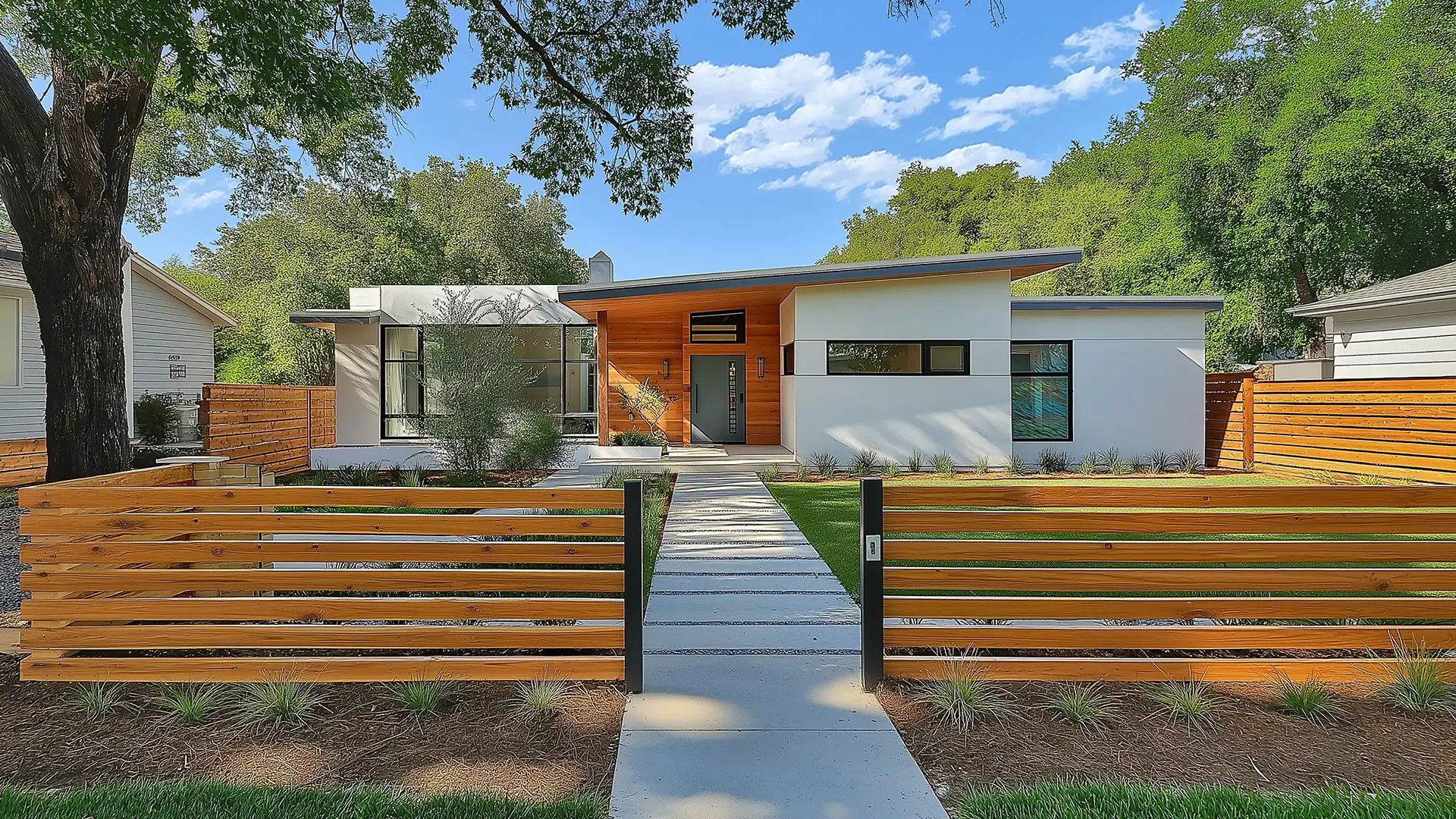Timeless Elegance and Practicality
Wood fences have long been a favorite choice among homeowners and property developers for their natural beauty, versatility, and ability to enhance the privacy and security of outdoor spaces. At CQ Fence, we understand the importance of choosing the right fencing material to match your needs, and wood stands out as a timeless, reliable option. Whether you’re looking to add rustic charm to your backyard, create a safe area for children and pets, or simply boost your property’s curb appeal, wood fences are a perfect solution. In this article, we’ll explore the benefits, types, and considerations of choosing a wood fence for your property.

Benefits of Wood Fences
Natural Aesthetic Appeal
One of the primary reasons people choose wood fences is the beauty they bring to a property. Wood is a naturally attractive material, and it adds warmth and character to outdoor spaces. The earthy tones blend seamlessly with the surrounding landscape, creating a welcoming environment. Wood fences can be painted or stained in a variety of colors to match the style of your home, making them highly customizable and suited for any design preference.
Versatility and Customization
Wood fencing offers a high degree of versatility. It can be crafted in different styles, from classic picket fences to tall privacy fences, and can be customized to fit specific needs and preferences. Homeowners can choose the type of wood, the height of the fence, and the style that best complements their property. Some popular wood fence styles include board-on-board, shadowbox, lattice-top, and split rail.
Privacy and Security
For those who value privacy, wood fences provide a solid barrier between your property and the outside world. Tall wood panels, often used in privacy fences, can help block unwanted views and reduce noise from nearby streets or neighbors. This makes wood fences an ideal choice for creating a peaceful, secluded outdoor space. Wood also provides a secure boundary that keeps pets and children safely contained while preventing unauthorized access.
Cost-Effective Solution
Compared to other fencing materials like wrought iron or vinyl, wood is often a more budget-friendly choice. The initial cost of installing a wood fence is typically lower, and while there may be ongoing maintenance costs, the affordability of the material makes it an attractive option for many homeowners. With proper care, a wood fence can last for many years, providing value and enhancing your property’s aesthetic appeal.
Environmentally Friendly
Wood is a renewable resource, making it an eco-friendly option for fencing. Many wood fences are made from sustainably sourced materials, and at the end of their lifespan, wood fences can be recycled or repurposed. This makes wood a great choice for environmentally-conscious homeowners looking to reduce their impact on the planet.
Types of Wood Used in Fencing
When selecting a wood fence, it’s essential to choose the right type of wood to ensure longevity and durability. The following are some of the most commonly used types of wood for fencing:
Cedar
When selecting a wood fence, it’s essential to choose the right type of wood to ensure longevity and durability. The following are some of the most commonly used types of wood for fencing:
Redwood
Redwood is another premium wood option that offers excellent durability and natural resistance to rot and insects. Its rich, warm color and straight grain make it an attractive choice for those looking for a high-end wood fence. While redwood tends to be more expensive than other types of wood, its longevity and beauty make it a worthwhile investment.
Pine
Pressure-treated pine is a more economical option for wood fencing. The treatment process helps protect the wood from rot, decay, and insect damage, extending its lifespan. Pine is versatile and can be stained or painted to match your desired look. It is a common choice for those looking for an affordable yet durable wood fence.
Spruce
Spruce is often used for picket fences and shorter fence panels. While it may not be as naturally resistant to decay as cedar or redwood, it is an affordable option that can be treated to improve its durability. Spruce is known for its light color, which makes it easy to paint or stain.
Wood Fence Styles
Wood fences come in a variety of styles, each serving different purposes and adding unique charm to your property:
Picket Fence
The classic picket fence is a symbol of the American dream, often used in front yards to create a welcoming atmosphere. Picket fences are typically shorter, with evenly spaced vertical boards, and can be painted white or any color to complement your home’s exterior.
Privacy Fence
Privacy fences are built with tall, solid panels that provide a barrier from neighbors and passersby. They are ideal for creating a secluded backyard retreat where you can relax without interruptions. Board-on-board and stockade styles are popular choices for privacy fences.
Lattice-Top Fence
A lattice-top fence combines the benefits of a solid privacy fence with the decorative touch of a lattice. The latticework at the top adds visual interest and allows some light and air to pass through while maintaining privacy. This style is perfect for gardens and outdoor living areas.
Split Rail Fence
Split rail fences are often used for defining property boundaries in a rustic, open style. They consist of horizontal rails supported by vertical posts and are commonly seen in rural or large properties. Split rail fences are ideal for those looking to create a natural, country feel.
Shadowbox Fence
Shadowbox fences are constructed with alternating boards on either side of the fence rail, creating a semi-private design. This style allows airflow while providing some privacy, making it a great option for homeowners who want a balance between openness and seclusion.
Maintenance Tips for Wood Fences
To ensure your wood fence remains in good condition and lasts for many years, regular maintenance is essential:
Staining and Sealing
Applying a stain or sealant to your wood fence helps protect it from moisture, UV rays, and other environmental factors. Staining should be done every few years to maintain the fence’s appearance and prevent rot.
Cleaning
Dirt, mildew, and algae can accumulate on wood fences over time. Periodic cleaning with a mild detergent and water can help keep your fence looking fresh. A pressure washer can also be used, but be careful not to use too much pressure, as it can damage the wood.
Inspect for Damage
Regularly inspect your fence for signs of damage, such as loose boards, rot, or insect activity. Addressing these issues early can prevent more extensive damage and prolong the life of your fence.
Avoid Ground Contact
To prevent rot, ensure that the wood panels do not come into direct contact with the ground. Installing the fence with a slight gap between the bottom of the panels and the ground can help reduce moisture-related issues.
Wood fences are a beautiful, versatile, and practical choice for homeowners looking to enhance their property’s privacy, security, and aesthetic appeal. At CQ Fence, we take pride in offering high-quality wood fencing solutions that cater to a wide range of styles and budgets. Whether you’re drawn to the classic charm of a picket fence or the seclusion of a tall privacy fence, wood offers the flexibility and natural beauty that can transform your outdoor space. With proper care and maintenance, a wood fence will provide lasting value and timeless elegance for years to come.
